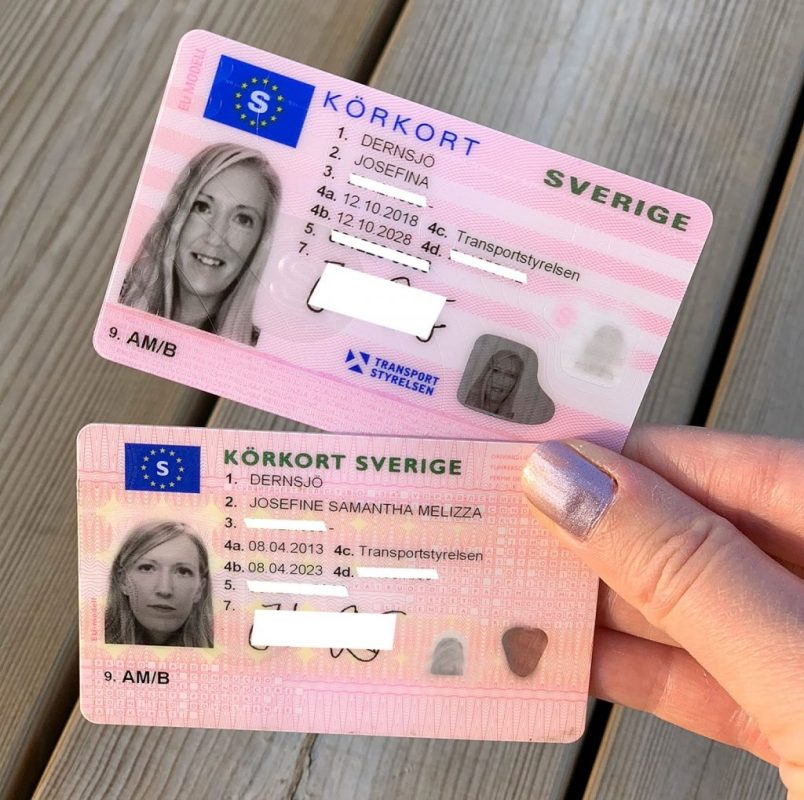10 Instagram Accounts On Pinterest To Follow Driving License Id-Handli…
페이지 정보
작성자 Cortney 작성일25-08-12 10:18 조회13회 댓글0건관련링크
본문
The Future of Driving Licenses: ID Handling in 2025
As technology continues to develop at an extraordinary rate, numerous sectors are embracing developments to improve user experience and performance. Among the locations experiencing significant transformation is identity management, especially worrying driving licenses. With the introduction of digital licenses and advanced identification techniques, the landscape of driving license ID handling is anticipated to undergo considerable changes by 2025. This short article checks out the awaited advancements in driving license ID handling, the ramifications for users, and answers frequently asked questions about the future of driving licenses.

The Evolution of Driving Licenses
Driving licenses have traditionally worked as a means of identifying an individual's authority to operate a motor car. They likewise serve several secondary purposes, including age verification and identity verification for banking and travel. Nevertheless, the physical card system has restrictions, including dangers of counterfeiting, loss, and out-of-date details. As society gravely depends on efficient and secure identification systems, the shift toward digital licenses is becoming significantly popular.
Existing Trends in Driving License ID Handling
Digital Licenses: Many states are piloting digital driving licenses that permit users to store their qualifications on their smartphones. These digital licenses are created with sophisticated security features, including biometric information, and can be scanned or shared securely.
Blockchain Technology: Some jurisdictions are exploring blockchain to enhance the security and authenticity of driving licenses. This technology guarantees that details can not be damaged which the data is quickly proven.
Facial Recognition: Increasingly utilized in identification practices, facial recognition technology can expedite the process of validating an individual's identity against their driving license. This innovation likewise assists reduce fraud and maintain the stability of the licensing systems.
Multi-Functional Licenses: Future driving licenses may incorporate additional functions such as health records, travel documents, and even payment systems, providing a comprehensive identity solution.
The Benefits of Digital Driving Licenses by 2025
The shift towards digital driving licenses provides a number of benefits, including:
Convenience: Users can access their licenses anytime, which eliminates the requirement for physical cards. This is particularly beneficial when people forget their license, as digital copies can be recovered rapidly.
Security: Advanced security procedures can reduce the risk of identity theft, scams, and unauthorized duplication. Digital licenses typically consist of encryption and biometric verification.
Effectiveness: Reduced wait times at government workplaces and KöRkortobline during traffic stops, as police can confirm digital licenses quickly.
Ramifications for Users
While the advancements in driving license ID dealing with present various benefits, they also feature difficulties. Users require to adjust to new technology and guarantee they comprehend the modifications and their ramifications. Here are some factors to consider:
Privacy Concerns: With increased digital footprints, there will be heightened concerns over data privacy and how biometric information is saved and utilized.
Ease of access Issues: Individuals without access to smartphones or digital innovations might deal with barriers to obtaining and utilizing digital licenses.
Regulatory Compliance: With various jurisdictions adopting various systems and processes, users must be mindful of their regional laws regarding digital licenses and recognition.
Prepared For Changes in Driving License ID Handling by 2025
| Element | Existing Status | Expected Change by 2025 |
|---|---|---|
| License Format | Physical cards | Mainly digital licenses |
| Verification Process | Manual checks | Automated biometric verification |
| Security Measures | Standard holograms and features | Advanced file encryption and blockchain |
| Jurisdictional Differences | Fragmented procedures across states | More standardized nationwide systems |
| User Interaction | In-person renewals and checks | Mobile applications for management |
Frequently asked questions
1. What is a digital driving license?A digital driving license is an electronic variation of a standard driving license that is kept on a mobile device. It can be used for identification and verification in various situations, with enhanced security features to avoid scams.
2. How will digital licenses enhance security?Digital licenses make use of file encryption and biometric data, making them more tough to forge or misuse compared to conventional cards. In addition, blockchain innovation can make sure information credibility and integrity.
3. Will everybody be required to switch to a digital license?While many jurisdictions are moving toward digital licenses, regulations might vary. Users are encouraged to consult their local licensing authorities for specific standards.
4. What are the potential disadvantages of digital licenses?Some potential downsides consist of privacy issues concerning data storage, accessibility issues for people without smartphones or digital literacy, and the requirement for a robust regulatory framework to manage security and user rights.
5. How can I get ready for the shift to digital licenses?Stay informed about regional efforts regarding digital licenses, check out offered mobile applications for handling identification, and cultivate digital literacy to browse new technologies with confidence.
The future of driving licenses and ID handling is poised for significant development by 2025. As digital licenses end up being more widespread, users will experience enhanced security, convenience, and efficiency. Nevertheless, alongside the benefits come obstacles that will need public awareness and adaptation. Stakeholders must prioritize education, policy, and accessibility to ensure a smooth shift that empowers people with the recognition tools of the future. As innovation advances, so too will the techniques through which society manages identity, particularly essential in procedures as fundamental as running an automobile.

